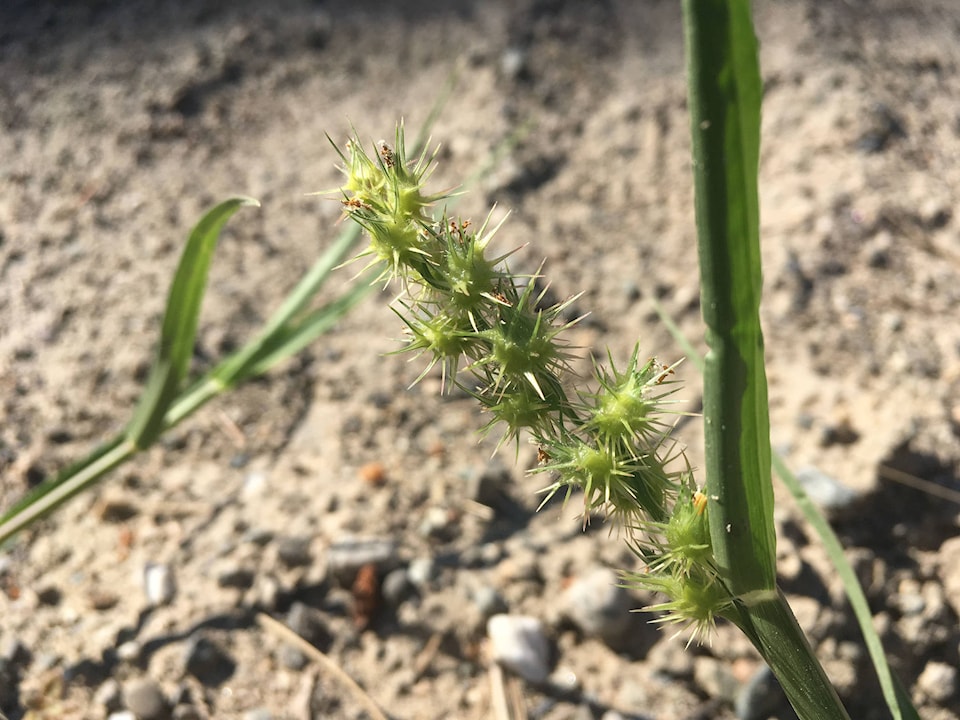In 2017 a new invasive species was found in Rock Creek. Longspine sandbur (Cenchrus longispinus) is native to the subtropical regions of North America but it is not native to Canada. It is an annual grass that has taken a foot hold in Christina Lake but 2017 was the first time we have found it out side of the Christina Lake area in the Boundary. It is also found in the South Okanagan.
We are looking for your help in locating any places that it has spread to. It could be anywhere in the Boundary so please keep an eye out for it. You can call, email or Facebook the Boundary Invasive Species Society with locations. If you find any burs on you or your pets please throw them in the garbage. We do not want this grass spreading!
Sandbur can grow up to 70 centimetres tall but the plants we are seeing in Rock Creek are more in the 15 to 30-centimetre range.
The easiest way to identify longspine sandbur is by the burs. They are extremely sharp and spikey. None of the other local grasses will have burs on them.
Longspine sandbur can poke through flip flops and damage bicycle tires. If this grass spreads and gets into yards, grasslands, rangelands or hay fields it will cause major problems.
If the sandbur contaminates animal feed it can cause ulcers in the animals’ mouths. Because it is not something that wild animals prefer to eat, if it starts to outcompete other grasses there will be less food for the wildlife to eat.
Treatments have been done on the sandbur with herbicide as well as pulling it out in Christina Lake. We only found a small patch of it in Rock Creek so it was pulled out by hand. It is easy to pull out and the herbicide treatments are also effective. We are doing inventory this summer to see if it has spread but we can always use more help.
To report longspine sandbur or any other invasive plants as well as to ask questions you can contact the Boundary Invasive Species Society at info@boundaryinvasives.com, 250-446-2232, on Facebook and check out our website at www.boundaryinvasives.com.
